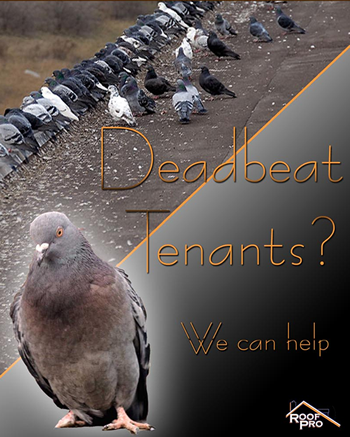
The Pigeon Problem
DAMAGES: The hazards of pigeon infestation result from droppings and nesting materials. These substances can clog water flow drains, leading to roof flooding; block ventilation systems, restricting air flow; and cause fires. The nests are often constructed of flammable substances such as twigs, scrap paper and straw. The acidic nature of the droppings can cause damage to tar-based roofing materials. These droppings harm numerous other building materials. Materials and equipment such as air conditioning equipment, insulation, wiring, piping and siding. You need bird protection of your roof because excessive droppings can also leave a bad impression on potential customers. It causes an unhealthy looking exterior and can easily lead one to wonder about the healthy conditions inside the building.
DISEASES:
As dangerous as parasites can be, though, perhaps even more troubling are the hazards posed by the enormous amounts of fecal matter pigeons leave heaped about the premises upon which they reside. Even if water and food sources are not directly contaminated with droppings, which can and does certainly happen. Indirect contamination is just as dangerous. Dried fecal matter soon disintegrates and becomes airborne, possibly finding its way into air ducts. This dust which then either settles directly onto food, into the lungs, or into open wounds. The consequences can be general flu like symptoms, septic infection, or Histoplasmosis, a potentially fatal lung disease caused by a fungus found in bird droppings.
PARASITES:
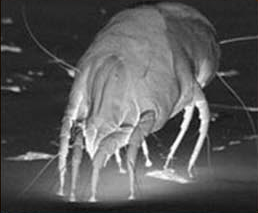
The rat – that most infamous vermin long associated with the spreading of disease – is not tolerated to thrive in our homes and work places out of rightful concern for safety. Yet pigeons, which in terms of the health hazards they present, are no more or less filthy than rats. They are often permitted to live in close proximity to the places we are otherwise so careful to protect. As with rats, many parasites, or mites, call the pigeon home. Parasites can transfer harmful germs to people simply by biting the unclean pigeon, then moving on to a new host and biting them. Bird mites are known to have transmitted disease causing organisms to the host, such as the virus of Saint Louis Encephalitis.
The Removal Process
PHASE ONE:
Removal of “high pressure birds” is a must if permanent elimination of the bird infestation is to be achieved.
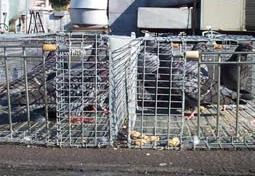
All attempts to deter birds with decoys, spikes, nets, nest removal, and other methods will be futile if the high pressure birds are not removed. The critical phase of the remediation process is generally done by humanely baiting and trapping these birds. Pigeons are considered an exotic, non endangered bird that is legal to trap and remove when considered to be causing hazardous or bothersome conditions. Phase one is always performed “discreetly” so as to not upset anyone in the general public. They may not understand the need to remove the infestation of pigeons in this manner. The birds, once trapped, are legally and humanely euthanized and disposed of to insure they do not return to their established location. Some locations are under awning, corners of skylights or chimneys and more hidden spots.
PHASE TWO:
Once liberated of the infestation of these high pressure, highly committed birds. It is then time to remove and quarantine the areas on your building that will make it unsuitable for infestation in the first place.
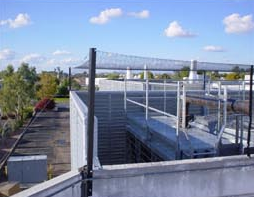
Firstly, the building must be fully inspected. Also all possible spots suitable for nesting must be completely closed (e.g. dormant HVAC units, exposed roof duct work, or any configuration suitable for building a nest). Secondly, it is necessary to remove all perching and loafing areas by use of shock tapes, spikes, nets, and other proven methods. A bird will not choose a nesting site if there is no spot upon which to perch and watch over its nest and surrounding area. By effectively removing nesting sites and perching spots on your building, you can expect birds to then see your building as an unattractive nesting site. A bird protection of your roof like spikes, small holed wiring of entrances and maybe a clay predator would work after removal.
PHASE THREE:
As terrific as it is to have removed the birds and installed products that have prevented their reestablishment.
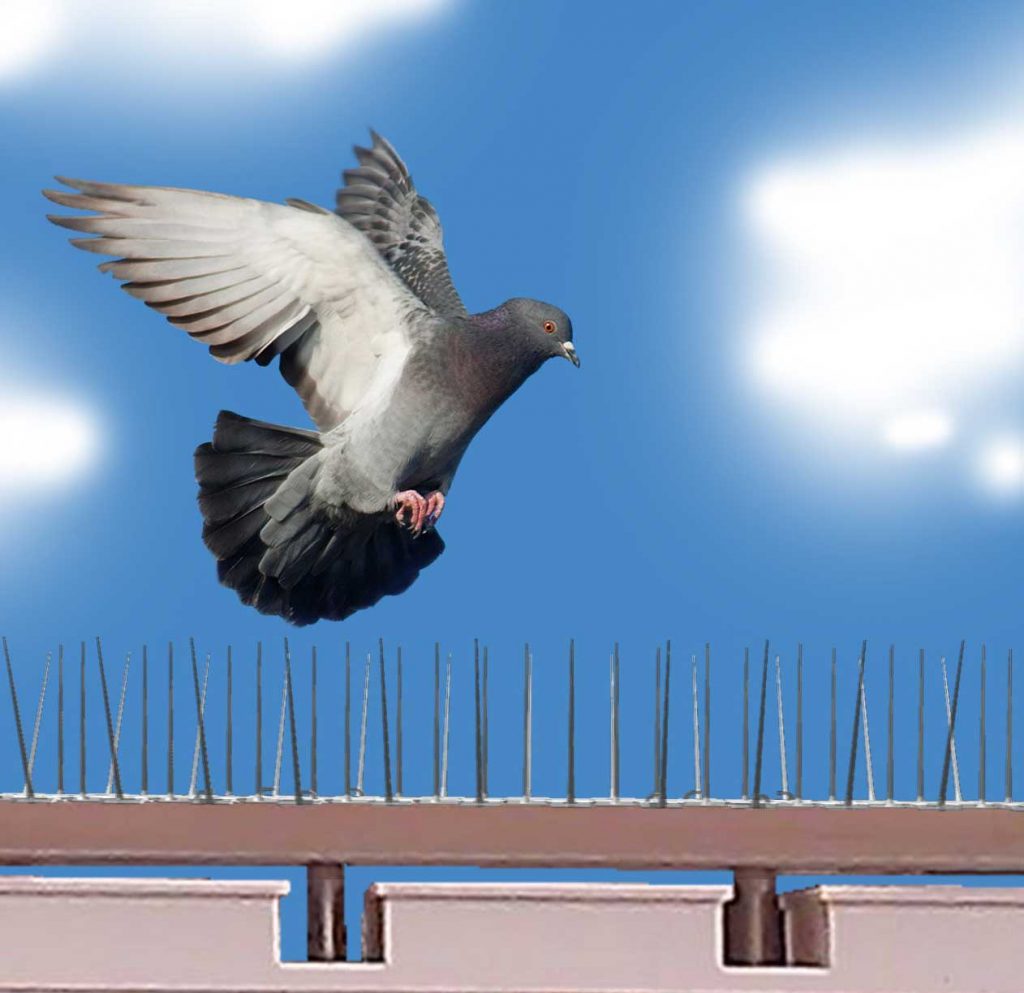
It is our strong recommendation that you keep an eye on the situation to ensure your building remains ‘bird free’. There is a possibility for a new nesting spot to be created. (e.g. on an access panel for an old HVAC that is left open by a service technician). It is extremely important to catch a re-infestation early due to the fact that pigeons breed and multiply very rapidly. “A stitch in time saves nine.” This procedure should be added to your regular maintenance program for Bird Protection. A check during the spring and autumn months is the best times to prevent such a reoccurrence.

